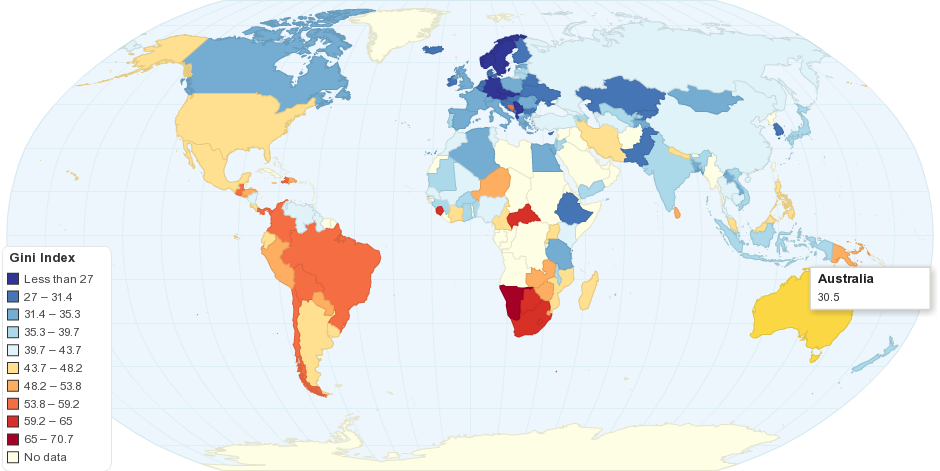This map shows the degree of inequality in the distribution of family income (Gini index or Gini coefficient) in each country. Income distribution measure the gap between the rich and the poor. In a very uneven income distribution, the rich are VERY RICH and the poor are VERY POOR, comparatively
What is Gini coefficient?
Gini index or Gini coefficient is an economic measure of inequality in income distribution. On a scale of 0 to 1, the lower the Gini coefficient, the more evenly distributed the wealth. The coefficient is named after its inventor, the Italian statistician Corrado Gini.
How is the Gini coefficient calculated?
Gini coefficient is calculated from the Lorenz curve, in which cumulative family income is plotted against the number of families arranged from the poorest to the richest.
The index is the ratio of:
- (a) the area between a country's Lorenz curve and the 45 degree helping line to
- (b) the entire triangular area under the 45 degree line.
The more nearly equal a country's income distribution, the closer its Lorenz curve to the 45 degree line and the lower its Gini index, e.g., a Scandinavian country with an index of 25. The more unequal a country's income distribution, the farther its Lorenz curve from the 45 degree line and the higher its Gini index, e.g., a Sub-Saharan country with an index of 50. If income were distributed with perfect equality, the Lorenz curve would coincide with the 45 degree line and the index would be zero; if income were distributed with perfect inequality, the Lorenz curve would coincide with the horizontal axis and the right vertical axis and the index would be 100.
15 years ago

